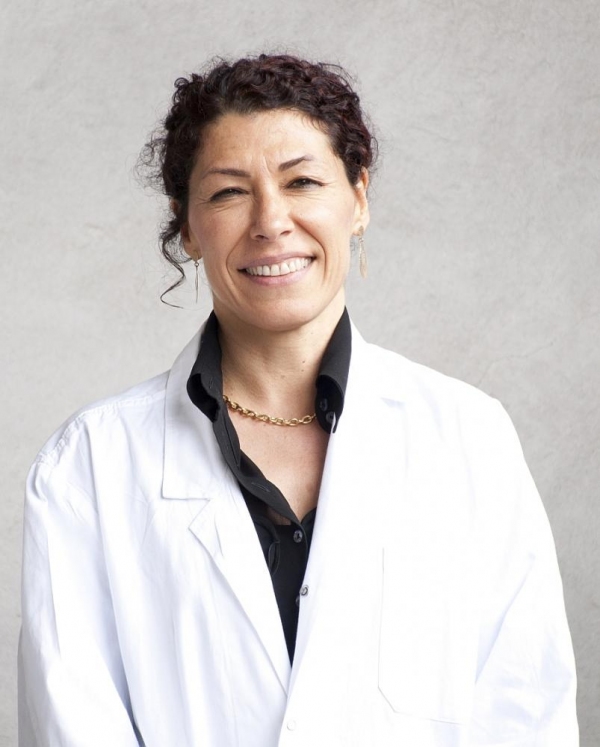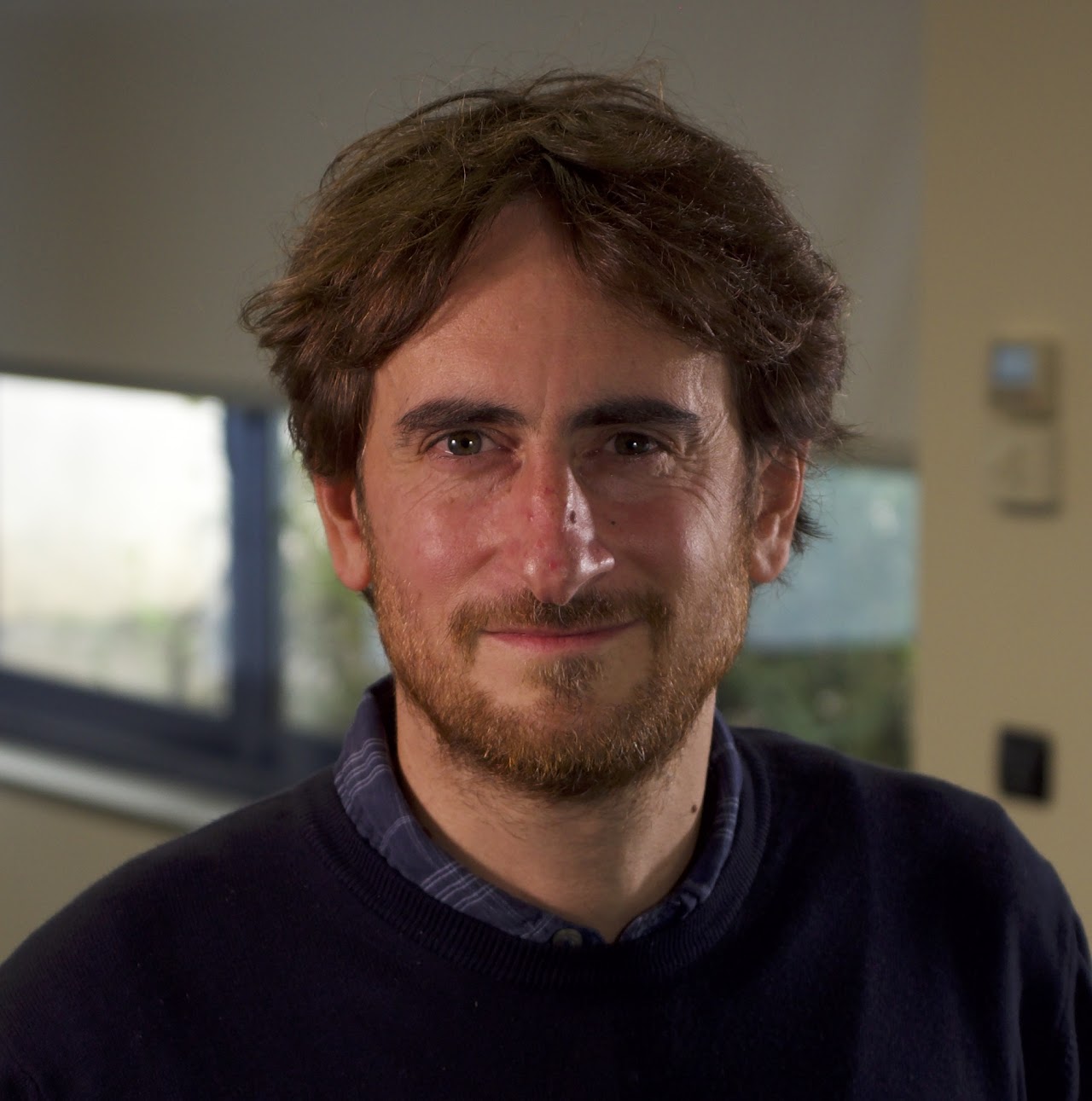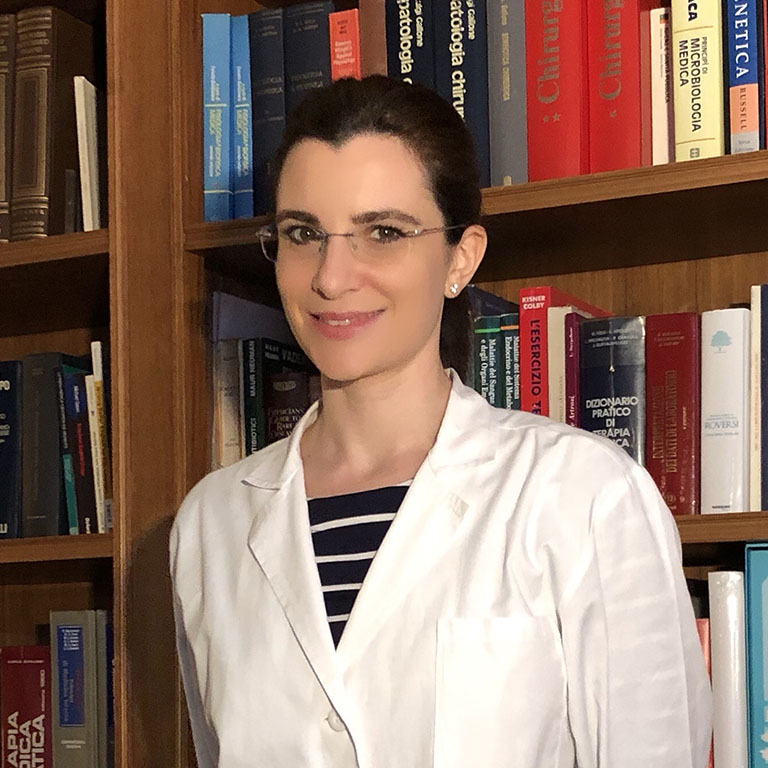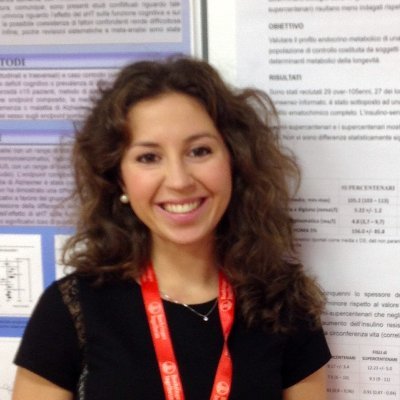PRACTICE
Pilot on Remote AutomatiC ulTrasound scan analysIs for hemophiliC patiEnts
Introduction to the pilot
Context
People with hemophilia may experience joint bleeding, which can result in permanent joint damage if not properly treated.
Problem
Presently, the diagnosis of joint bleeding relies on ultrasound imaging, necessitating a physical visit to a specialized center. This limitation poses a hindrance to early detection.
Solution
We are developing a solution that enables patients and caregivers to acquire ultrasound images at home. These images can then be remotely diagnosed by healthcare practitioners.
Overall Objective
To enable the remote diagnosis of joint bleeding, providing a faster and more convenient diagnostic process for patients while reducing costs for the healthcare system.
Objectives
Currently, hemophilic patients need to frequently visit specialized centers, but this is not always possible, for example due to the distance from the center. The project aims to offer a convenient diagnostic procedure that is user-friendly, enabling patients to receive prompt and accurate diagnoses without the necessity of physically attending specialized centers. This approach will help minimize the risks of under or over-treatment, thus providing an added advantage to patients’ overall well-being.
Enhanced monitoring of patients’ joint health status will significantly impact both direct costs, such as medication expenses, and indirect costs, such as follow-up visits. The system is being designed to minimize the burden on healthcare practitioners, allowing them to efficiently and accurately establish diagnosis with speed and reliability.
System components
The patient or caregiver can acquire ultrasound images at home using a portable ultrasound probe connected to a mobile PC. However, acquiring high-quality ultrasound images can be challenging and often requires extensive training. To simplify the process for patients or caregivers, we are developing the GAJA app, which leverages machine learning models to provide guidance during the image acquisition process.
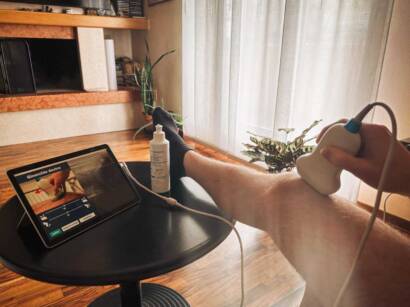
Once the practitioners receive the acquired images, their role is to provide a diagnosis. To expedite the procedure and enhance diagnostic accuracy, we are developing CADET, a specialized computer-aided diagnosis tool. CADET leverages advanced machine learning models to prioritize interventions and intelligently reorganize the received images. Additionally, CADET autonomously identifies conditions like joint distention, providing valuable assistance to practitioners during the diagnostic process.

COD20 is a telemedicine platform. Our goal is to integrate the GAJA and CADET systems with COD20 to facilitate system scalability and provide functions such as visit bookings and diagnosis storage.

Timeline
The multidisciplinary team meets to define the project schedule and specific objectives. The team starts analyzing the problem and the possible solutions in detail.
Our team has trained a machine learning model that is capable of identifying distended joint recesses in ultrasound images. Since joint recess distention can be caused by hemarthrosis, this a first tool to support the remote diagnosis of hemarthrosis.
A first prototype of t system is ready. It supports the patient (or their caregivers) to acquire ultrasound joint images.
After receiving the approval from the Ethical Committee, the research team has started experimenting the GAJA app with the patients. The aim is to evaluate whether the patients (or their caregivers) are able to acquire ultrasound images that can be used for hemarthrosis diagnosis.
CADET was extended to include a semi-automatic procedure to support the practitioner in the evaluation of joint bleeding
Based on the result of the first round of tests, GAJA is improved with enhanced user experience
CADET is integrated with the telemedicine system COD20
Team
Publications
ReC- Ttt: Contrastive Feature Reconstruction for Test-Time Training, M. Colussi, S. Mascetti, J. Dolz and C. Desrosiers, IEEE/CVF Winter Conference on Applications of Computer Vision (WACV), Tucson, AZ, USA, 2025, pp. 6699-6708, doi: 10.1109/WACV61041.2025.00652, 2025 Publication
LoRIS - Weakly-Supervised Anomaly Detection for Ultrasound Images, M. Colussi, D. Ahmetovic, G. Civitarese, C. Bettini, A. Solyman, R. Gualtierotti, F. Peyvandi, S. Mascetti , In: Simplifying Medical Ultrasound / [a cura di] A. Gomez, B. Khanal, A. King, A. Namburete. - [s.l] : Springer Nature, 2024 Oct 05. - ISBN 978-3-031-73646-9. - pp. 198-208 (( Intervento presentato al 5. convegno International Workshop on Advances in Simplifying Medical Ultrasound tenutosi a Marrakech nel 2024 [10.1007/978-3-031-73647-6_19]., 2024 Publication
Optimizing long-term joint health in the treatment of hemophilia, Roberta Gualtierotti, Andrea Giachi, Chiara Suffritti, Luca Bedogni, Francesco Franco, Francesco Poggi, Sergio Mascetti, Marco Colussi, Dragan Ahmetovic, Valentina Begnozzi, Elena Anna Boccalandro, Luigi Piero Solimeno & Flora Peyvandi, Expert Review of Hematology, 17(10), 713–721, 2024 Publication
Insights on the development of PRACTICE, a research-oriented healthcare platform, Dragan Ahmetovic, Alessio Angileri, Sara Arcudi, Claudio Bettini, Gabriele Civitarese, Marco Colussi, Andrea Giachi, Roberta Gualtierotti, Sergio Mascetti, Matteo Manzoni, Flora Peyvandi, Aiman Solyman, Addolorata Truma, IEEE International Conference on Smart Computing (SMARTCOMP) - ISBN 979-8-3503-4994-8. - pp. 380-385 , 2024 Publication
Ultrasound evaluation of hemophilic arthropathy: a proposal of definitions in a changing landscape, Gualtierotti, Roberta, Luigi Piero Solimeno, Flora Peyvandi, Andrea Giachi, Sara Arcudi, Alessandro Ciavarella, and Simona Maria Siboni, Research and Practice in Thrombosis and Haemostasis, 2024 Publication
GAJA - Guided self-Acquisition of Joint ultrAsound images, Marco Colussi, Sergio Mascetti, Dragan Ahmetovic, Gabriele Civitarese, Marco Cacciatori, Flora Peyvandi, Roberta Gualtierotti, Sara Arcudi, Claudio Bettini, International Workshop on Advances in Simplifying Medical Ultrasound (ASMUS 2023 (MICCAI Workshop)), 2023 Publication
A Computer-Aided Diagnosis Tool for the Detection of Hemarthrosis By Remote Joint Ultrasound in Patients with Hemophilia, Gualtierotti, R., Arcudi, S., Ciavarella, A., Colussi, M., Mascetti, S., Bettini, C., & Peyvandi, F. , Blood, 140(Supplement 1), 464-465., 2022 Publication
Ultrasound Detection of Subquadricipital Recess Distension, Colussi, M., Civitarese, G., Ahmetovic, D., Bettini, C., Gualtierotti, R., Peyvandi, F., & Mascetti, S., Intelligent Systems with Applications, 200183., 2023 Publication

